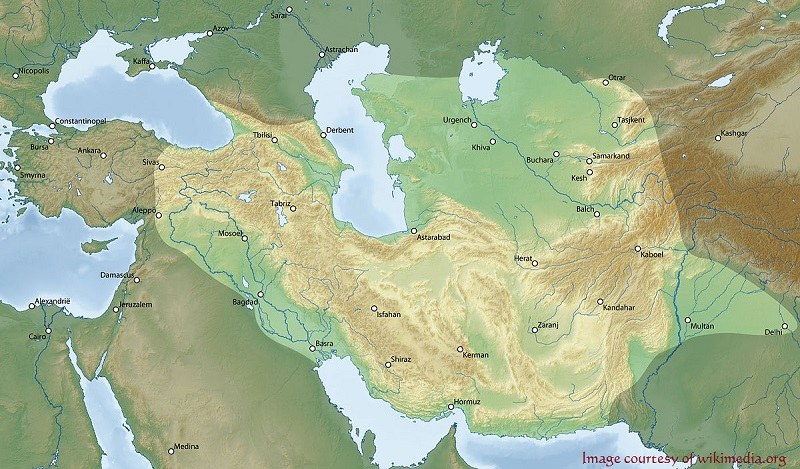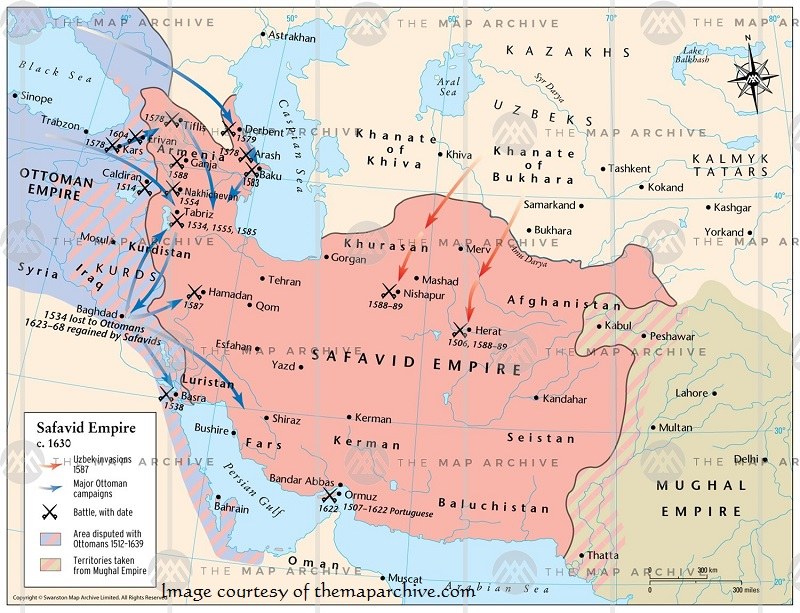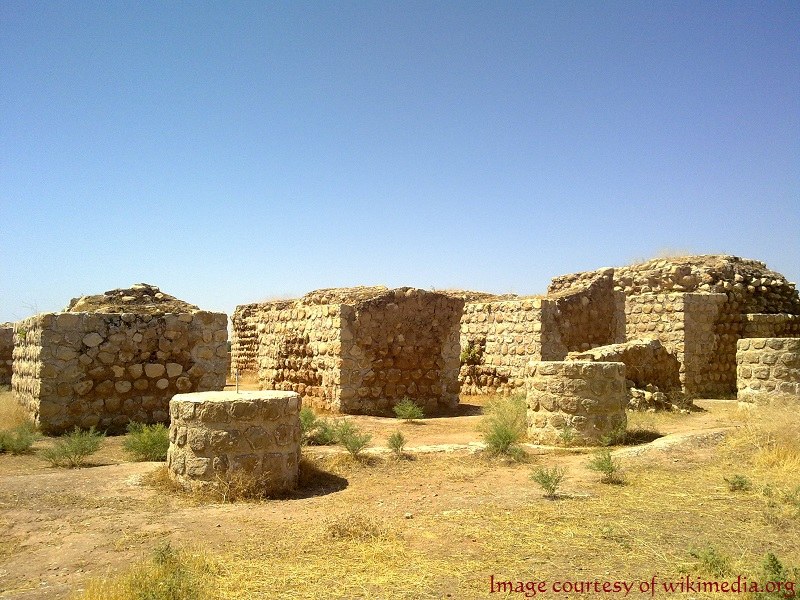
The Historic Ensembles of Qasr-e Shirin is located at the town of Qasr-e-Shirin in the South-West of Kermanshah province. On the western and northern sides of this province, there’s Iraq, our neighboring country. On the eastern side, it is neighbor to Sarpol-e-Zahab and Gilan-e Gharb towns. The province of Ilam is in the southern part of Qasr-e-Shirin historic town.
These historic ensembles of western Iran are considered one of the tourist attractions in the province of Kermanshah. According to the studies, this town and its ancient buildings date back to the Sassanid Era. Of course, some other archeologists believe that Qar-e-Shirin emerged during the Medes’ era!
There are numerous ancient monuments in the town of Qasr-e-Shirin. Archeologists have asserted that many of these historical and cultural relics are from the time of Khosro Parviz, the Sassanid king of ancient Persia.
Chahar-Qapi Fire Temple, a Symbol of Sassanids’ Architecture
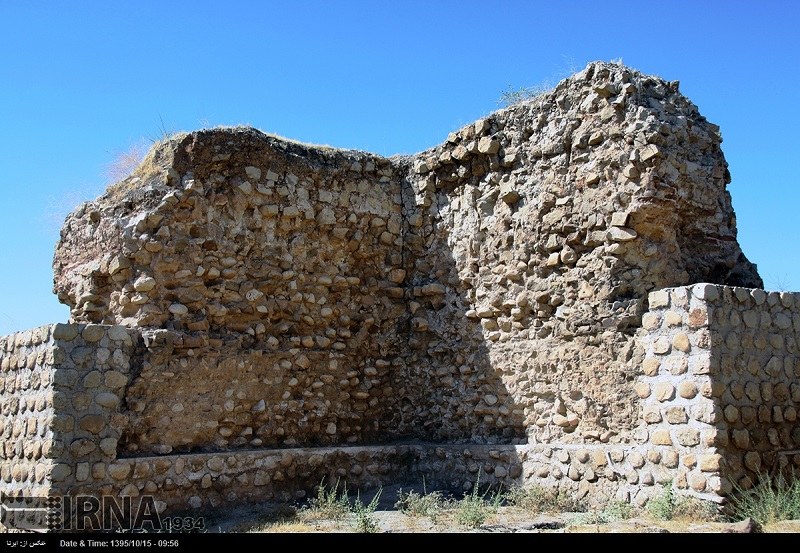
One of the monuments of the Historic Ensembles of Qasr-e-Shirin is Chahar-Qapi fire temple. This attraction is on the northern side of the town. Archeologists have described Chahar-Qapi fire temple (four-arched fire temple) historical monument as a square-shaped room.
The dimensions of the room are 25 by 25 meters and the architects of that era have constructed it in a domed shape. What is available today from this historical building is a square construction whose dome is unfortunately lost.
Based on the relics archeologists have found in their excavations around the historic ensembles of Qasr-e-Shirin, one can easily infer that Sassanids have used this site as a temple to practice their religious rituals.
The Palace of Khosro, an Emblem of Everlasting Love in History
Khosro Parviz Mansion or the Palace of Khosro is another building of the historical ensembles of Qasr-e Shirin. It’s an example of Sassanid architecture. Khosro Parviz was in charge of the throne of Sassanids from 590 to 628 AD. During his reign, he could conquer lots of territories in Persia and Rome.
Khosro’s Palace is a mansion near Chahar-Qapi fire temple, about 180 kilometers north of Kermanshah in Qasr-e-Shirin. Archeologists attribute this historical monument to Sassanid Era too.
Nothing much is left from this ancient monument in Qasr-e-Shirin Historic Ensembles other than some stone-made ruins. Studies of the archeologists have shown that architects of that age had employed specific plans to build the palace of Khosro.
Multiple rooms, stable, large halls, stone-made pillars, halls with domical roofs and beautiful verandas are just parts of the architecture of the Sassanid Era that the architects have made use of in constructing this antique building.
Many historiographers have ascribed the reason for the construction of Khosro Parviz Palace to the incidents of the story of “Khosro and Shirin”, the beautiful love story of Nizami Gangavi, also narrated by Ferdowsi. The love story of Shirin and Farhad and the presence of Khosro Parviz in this everlasting love is a narrative that stirs up every reader’s feelings.
Abbasi Caravansary of Qasr-e-Shirin Historic Ensemble, a Symbol of Safavid Architecture
Another ancient monument of the historic ensembles of Qasr-e Shirin is Abbasi Caravansary. Historiographers and archeologists contend that architects had started the construction of this caravansary during the Safavid Dynasty. In addition, others have finished the building of some parts of it during the early Pahlavi.
Constructing Abbasi Caravansary of Qasr-e-Shirin, the architects have made use of chalk, earth, lime, and different building materials. The structure includes platforms, cellars, large chambers and yards, the enclosure for travelers’ rest and their animals, wide and high verandas, and some stables for keeping the horses.
The architects of that era had completed the Abbasi Caravansary with multiple corridors, porches, and large chambers. In the past, this ancient building has been a secure place for the repose of the caravans in their journeys.
Museum of Anthropology of Qasr-e-Shirin, a Place to Get Acquainted with Culture and Art of Western Iran
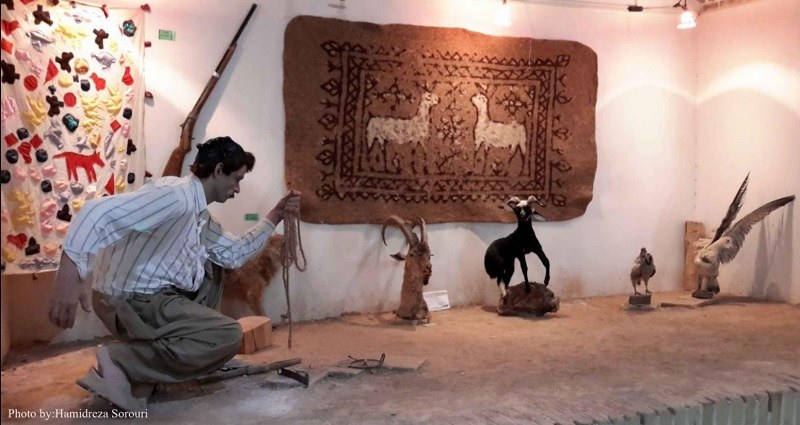
The cultural authorities have dedicated a part of the Abbasi Caravansary of Qasr-e-Shirin town to a museum titled “The Museum of Anthropology”. In this museum, there are objects showcasing the ancient customs, culture, civilization, art, and architecture of the historic ensembles of Qasr-e-Shirin.
In the Museum of Anthropology of Qasr-e-Shirin, one can observe works such as rural house settings, local costumes, agricultural and animal husbandry equipment used by the inhabitants of this region and the old means of transportation.
One may as well get acquainted with the artwork of the people of Kermanshah Province like mat weaving art, black tents, forging tools, colorful clothes, local foods and handicrafts of this region.
Qasr-e-Shirin throughout Time
The beautiful and grand palaces that are ascribed to the throne of Khosro Parviz are emblematic of Sassanid architecture of whom nothing is left but some ruins.
Throughout history, this town has witnessed lots of wars and historical events. The Arabs’ invasion of the Sassanid Empire is an instance of the greatest historical incident in this ancient area.
Khosro Parviz was defeated in the invasion of Arabs and escaped to Rome. Being supported by the Senate of Rome he succeeded in regaining his power in Qasr-e-Shirin and taking the town back from Arabs. Unfortunately in the contemporary time and during the Iraqi-imposed war, due to the neighborhood of Qasr-e-Shirin with Iraq, this region was invaded by the Iraqi forces and received severe damages.
In 1981, the Iranian army could free the town from the blockade of Iraqi forces. What is today exhibited for the public are the reconstructed relics of that age that are structured by the efforts of the town’ inhabitants. However, it’s quite worth it to have a visit to the historic ensembles of Qasr-e Shirin and what’s left there.






